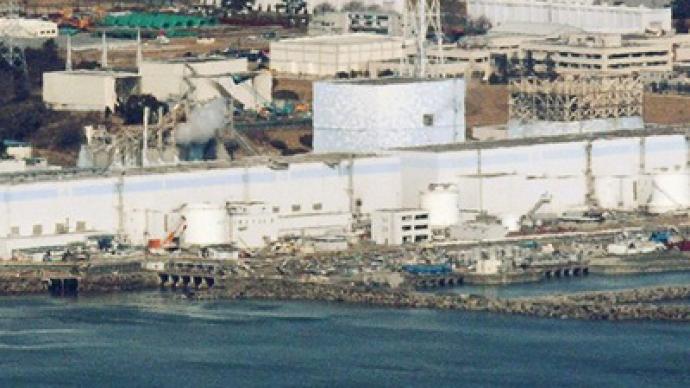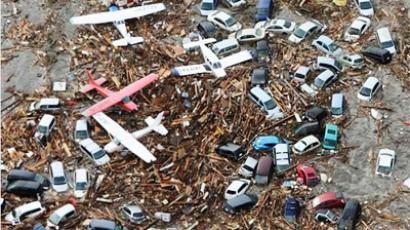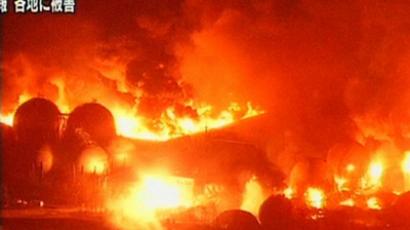Pessimism over Fukushima-1 crisis

Japanese authorities admit they are coping with an unprecedented crisis at Fukushima-1 nuclear power plant and insist there is still a chance to avert a nuclear disaster. But many in the nuclear field do not share their hope.
Uzi Even, a chemistry professor from Tel Aviv University, claims that the reports provided by the Japanese government are misleading. He believes the worst scenario has happened. “All reactors were damaged in the earthquake. The containment vessels are breaking down and they will continue breaking down”, says Even. “The question now is: what will happen to the content of these reactors, these highly radioactive isotopes? Especially worrying is the presence of plutonium in these reactors. It is something which has not happened in Chernobyl – it did not contain plutonium, which is very, very poisonous. Contamination by plutonium is very difficult to handle. On the other hand, unlike what happened in Chernobyl, there is no graphite in the reactors that can burn and send the contamination into the air and hence disperse to a wide area. So, contamination is there. It is spreading slowly. Hopefully, it will be carried to the sea, but no one can guarantee that.”“All the reactors are dead; all the rescue efforts are in vain,” continues Even.To minimize the damage brought by the nuclear crisis at Fukushima-1 power plant, the reactors could be stored deep in the concrete, the pollution should be monitored, the areas that are polluted are to undergo decontamination, and the people need removing from dangerous zones, Even concludes.
At the same time, Dr. Gerhard Wotawa, a senior meteorologist whose team has been mapping the movement of radiation from the Fukushima power plant, says so far the wind has been blowing in a good direction for Tokyo. He says it's blowing toward the Pacific Ocean and therefore not affecting Japan’s capital nor most of the country's territory.“In a bad case scenario over the next weeks the radiation will spread over vast areas of the world but it would not pose any significant health risks beyond the immediate areas near the [damaged] reactor, so for some hundreds to thousands of kilometers there will be low levels of radioactivity.”
Danger to health
Professor Steve Wing, an epidemiologist from the University of North Carolina, points out that any amount of radiation is dangerous, though the symptoms of damage will depend on the radiation levels.“At high levels, the workers [on the scene] could experience acute symptoms, such as burns or nausea, vomiting, hair loss – those kinds of things. And at lower levels, they will experience future risk of cancer… any amount increases risk of cancer,” he told RT.Wing explains that pregnant women (and their fetus) and children are particularly susceptible to damage from radiation. Also, he continued, there is a spectrum of types of radiation that are being emitted now at Fukushima Daiichi which pose a different threat.“Some of the radiation emissions from the reactors and the fuel pools have very short half lives. They will disappear; they will decay away – minutes, hours, days. Other types of radionuclides… will last for years, hundreds, thousands of years,” Wing explained.However, the Japanese government insists that the radiation levels more than 30 kilometers away from the plant are not immediately threatening. Wing notes that this statement is only plausible if there is an absence of acute symptoms.“It doesn’t mean that there won’t be risks to the populations that are exposed that will play out over the rest of their lives, because even after the radiation is gone, the genetic damage could lead to cancer many years later,” he stated.
Dr. Lam Ching-Wan, a chemical pathology specialist at Hong Kong University, reminds people to stay indoors and try to monitor the dose of radiation they have been receiving. He would not depend on the data released by the officials and advises people to maintain individual surveillance in order to get more adequate and accurate data on radiation levels to personalize cancer risks. “Those who have high exposure levels of radiation, many months or many years later can develop cancer, thyroid cancer or leukemia. At this moment we should tick a baseline for the patients exposed to radiation and then we will follow them up. In case they have cancer, we can do an early diagnosis and early treatment,” says Lam Ching-Wan.
Olli Heinonen is a senior fellow at the Belfer Center for Science and International Affairs at Harvard University. Before that he spent 27 years with the International Atomic Energy Agency, the last five as deputy director general. He thinks that regardless of all the great efforts, we still have a potential catastrophe on our hands.“When such a thing happens, it’s a national catastrophe for Japan, but it’s also a catastrophe for every citizen of the world – the radiation doesn’t recognize borders,” Heinonen said. “We should stop here and think whether we should have an international safety and security inspectorate. More work needs to be done to insure that nuclear energy is used properly.”
Aileen Mioko Smith, executive director of the Green Action environmental group, says that even though the Japanese government does not want to cause panic, it should have told its citizens the whole truth from the very beginning. Now the evacuation planning in the country is so far behind that it could lead to very serious consequences“The facts have to be told,” Smith said. “The Japanese people need to be told how much the government knows and doesn’t know, and what the potential worse-case scenarios are. The more you tell ahead of time, the less panic there will be… We are very fearful there will be a genuine panic, and it’s being caused by the Japanese government withholding the information.”














